Quote:
|
Originally Posted by Munchausen
Quote:
|
Originally Posted by Nisgeis
It works not only for 45 degree attacks, but for 90 degree attacks, 60 degree attacks, even attacks from behind and will give the right solution every time, so people may well see their hit rates increasing with these zero gyro angle shots.
|
:hmm: I thought the advantage of the 45-degree attack was that it provided an easily computed collision course ... using a simple ratio between target speed and torpedo speed. How does it work if you're attacking at other angles? |
After thinking about it awhile, I realized this method can be done at any angle, without using the TDC at all ... but (I think) I did it bass-ackwards. Here's what I did, using RR's single mission scenario.
1. Took two fixes of the target, three minutes apart.
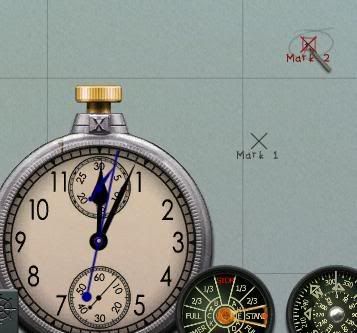
2. Drew a line through both fixes and extended it past my sub's present position.

3. Determined the target's speed ... about 12 knots.
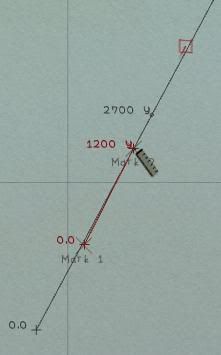
4. After making a random turn (nothing specific ... just somewhere between 45 and 90 degrees) toward the target's track, checked my heading on the compass ... which happened to be about 273 degrees.
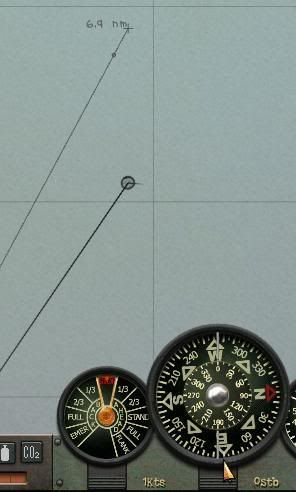
5. Plotted my heading (273) on the navigation map.
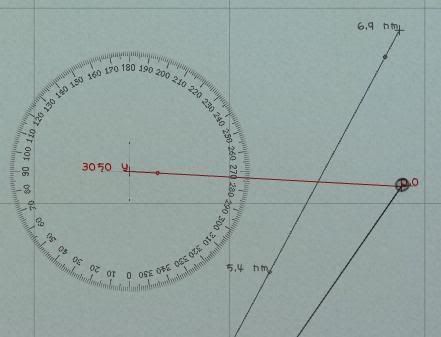
6. Overlaid a "hypothetical" triangular solution where:
- The side corresponding to my heading = 4600 yds (torpedo speed x 100).
- The side corresponding to the target's heading = 1200 yds (target speed x 100).
After adding the third side of the triangle, the angle opposite the target's side measured 12 degrees.
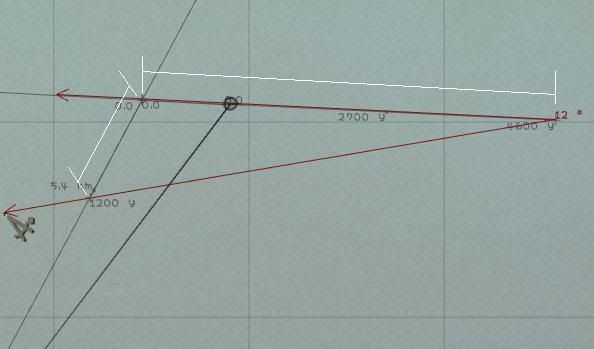
Note: The two "heading" sides are marked off with white goalposts and the angle opposite the target's heading is in red. The 12-degree (lead) angle will work for the (shorter) real distance between target track and sub's position because the ratio between the hypothetical triangle and the actual triangle is the same.
7. Transposed the lead angle (12 degrees) to sub's present position. (This step isn't necessary ... it just makes it easier to judge how close the target is to the firing point.) Note the ratio between the two triangles.

8. Identified the target.
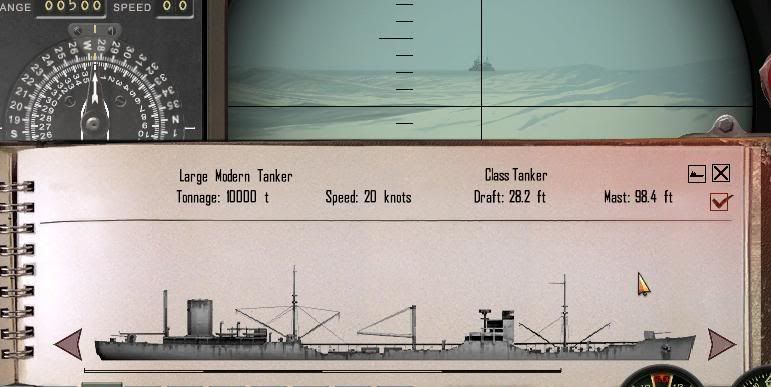
9. Set the torps: high speed, contact/influence, 17 feet (and then opened tubes 1, 2, 3 and 5).
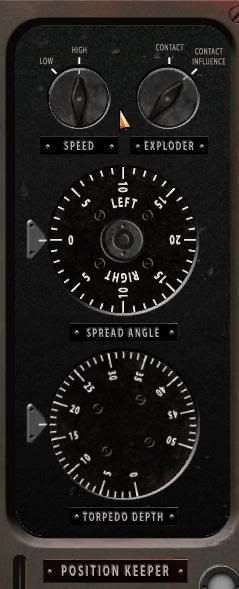
10. Checked the attack map to make sure gyro angle was set to zero.
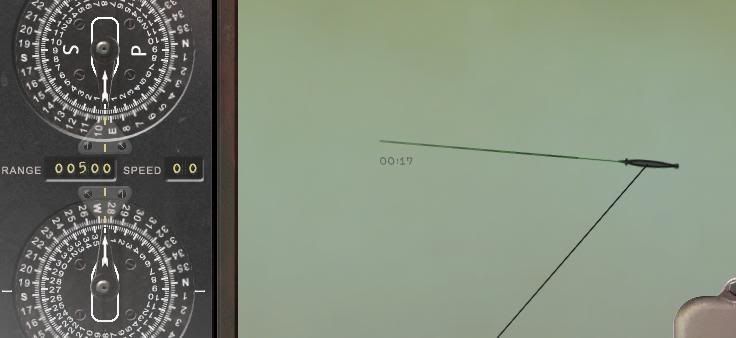
11. Turned periscope 12 degrees left (to 348 relative) and fired as the "juicy parts" of the target sailed past the crosshairs.

12. Hit ... slightly after of aim point. The last three torps hit just about on target. None missed.
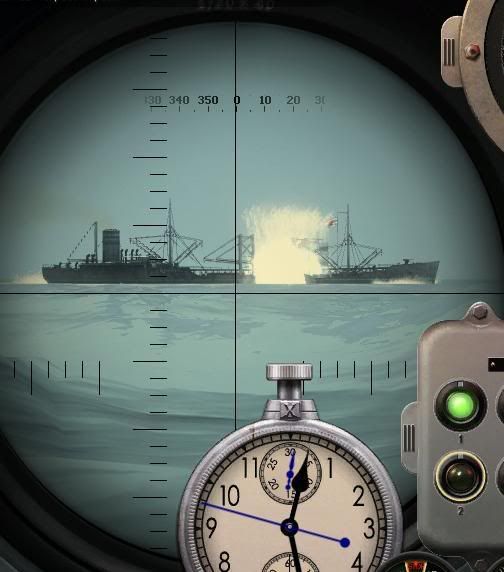
So, was that bass-ackwards or what?